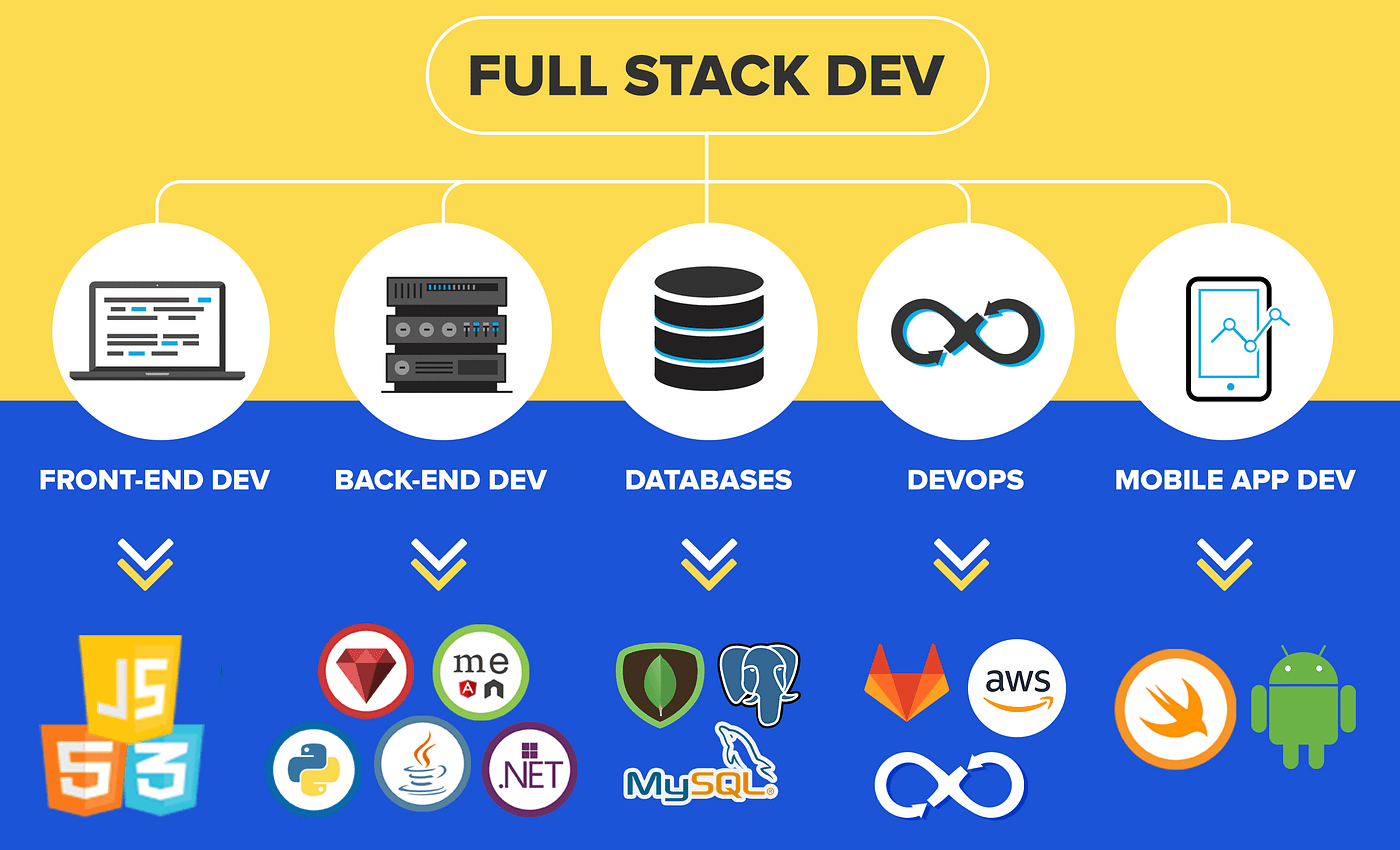Full Stack Development with Java and Python

About Course
#### 1. Introduction to Full Stack Development
– **Understanding Full Stack Development**
– Definition and role of front-end, back-end, and database layers in web development.
– Importance of versatility and proficiency in multiple technologies for full stack developers.
#### 2. Front-End Development Fundamentals
– **HTML, CSS, and JavaScript Basics**
– Overview of HTML for creating web page structures.
– Using CSS for styling and layout purposes.
– Introduction to JavaScript for client-side interactivity.
– **Modern Front-End Frameworks**
– Overview of popular frameworks like React.js and Angular for building responsive and dynamic user interfaces.
– Benefits of using frameworks to streamline development and enhance user experience.
#### 3. Back-End Development with Java
– **Core Java Concepts**
– Fundamentals of Java programming language.
– Object-oriented programming principles (classes, objects, inheritance, polymorphism).
– **Servlets and JavaServer Pages (JSP)**
– Developing dynamic web applications with Servlets for handling requests and responses.
– Using JSP for templating and dynamically generating web pages.
– **Spring Framework**
– Introduction to Spring Framework modules (Spring Core, Spring MVC).
– Implementing dependency injection (DI) and inversion of control (IoC) in Spring applications.
– Building RESTful APIs with Spring Boot for efficient back-end development.
#### 4. Back-End Development with Python
– **Python Fundamentals**
– Overview of Python syntax, data types, and control structures.
– Understanding Python’s strengths in web development and scripting.
– **Django Framework**
– Building web applications rapidly with Django.
– Creating models, views, and templates using Django ORM and templating engine.
– Integrating Django with front-end technologies for seamless user experiences.
#### 5. Database Management
– **SQL and NoSQL Databases**
– Overview of relational databases (e.g., MySQL, PostgreSQL) and their usage in web applications.
– Introduction to NoSQL databases (e.g., MongoDB) for handling unstructured data.
– **ORM (Object-Relational Mapping)**
– Using Hibernate (Java) and Django ORM (Python) to interact with databases.
– Mapping database entities to Java/Python objects for efficient data management.
#### 6. Building a CMS System
– **Project-Based Learning**
– Step-by-step development of a Content Management System (CMS) similar to WordPress, Joomla, or Drupal.
– Integrating front-end interfaces with back-end functionalities using Java and Python frameworks.
#### 7. Deployment and DevOps
– **Version Control and Collaboration**
– Utilizing Git for version control and managing collaborative development.
– Best practices for team-based development and code repository management.
– **Containerization and Cloud Deployment**
– Introduction to Docker for containerizing applications.
– Deploying applications to cloud platforms like AWS or Heroku for scalability and availability.
#### 8. Security and Performance Optimization
– **Web Security Practices**
– Implementing secure authentication and authorization mechanisms.
– Protecting against common web vulnerabilities in Java and Python applications.
– **Performance Optimization**
– Techniques for optimizing code and improving application performance.
– Caching strategies and database performance tuning.
#### 9. Testing and Debugging
– **Unit Testing and Debugging Techniques**
– Writing unit tests for Java and Python code to ensure functionality and reliability.
– Debugging strategies for identifying and resolving issues in full stack applications.
#### 10. Emerging Trends and Future Directions
– **Microservices Architecture**
– Overview of microservices and their advantages in modern web development.
– Building microservices using Java (Spring Boot) and Python (Flask) frameworks.
– **Serverless Computing**
– Introduction to serverless architecture and its applications in web development.
– Implementing serverless functions with Java (AWS Lambda) and Python (Azure Functions).
#### Conclusion
– **Career Opportunities and Advancement**
– Recap of skills acquired in full stack development with Java and Python.
– Exploration of career paths and opportunities in the dynamic field of web development.
—
This structured content outline covers the essential aspects of full stack development using Java and Python, from front-end fundamentals to back-end frameworks, database management, project-based learning, deployment strategies, security considerations, and emerging technologies. Each section can be expanded with detailed explanations, practical examples, and hands-on exercises to enrich the learning experience.
The modules and lessons outlined in this course are subject to change as we continuously update the curriculum by incorporating new topics, tools and techniques as they emerge to reflect the latest advancements so as to align with the industry standards and practices.
Student Ratings & Reviews

